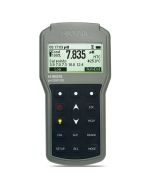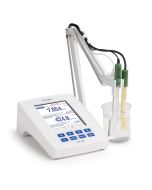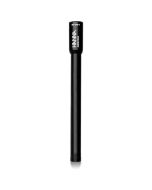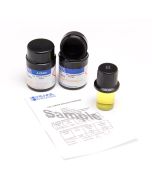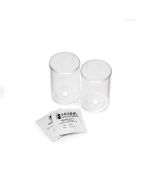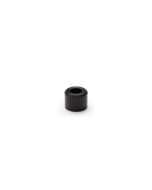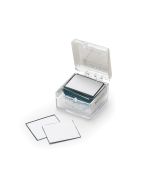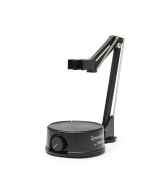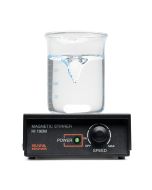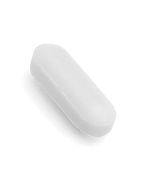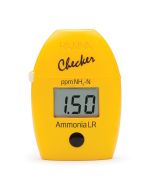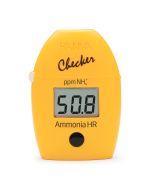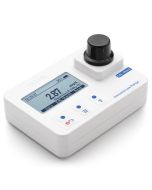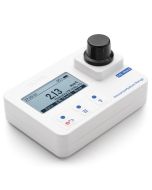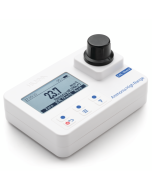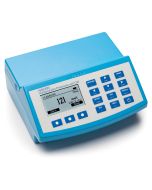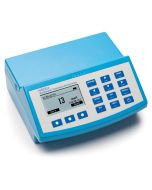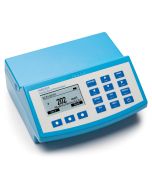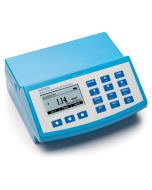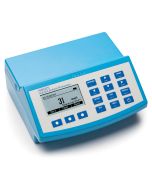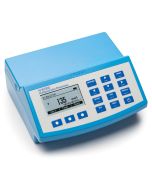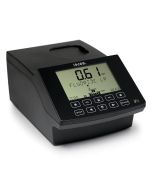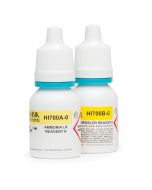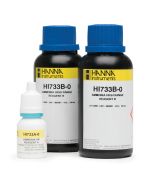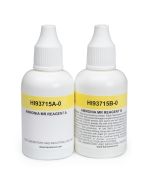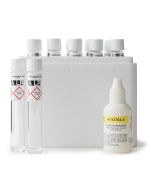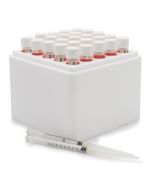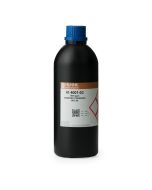Ammonia
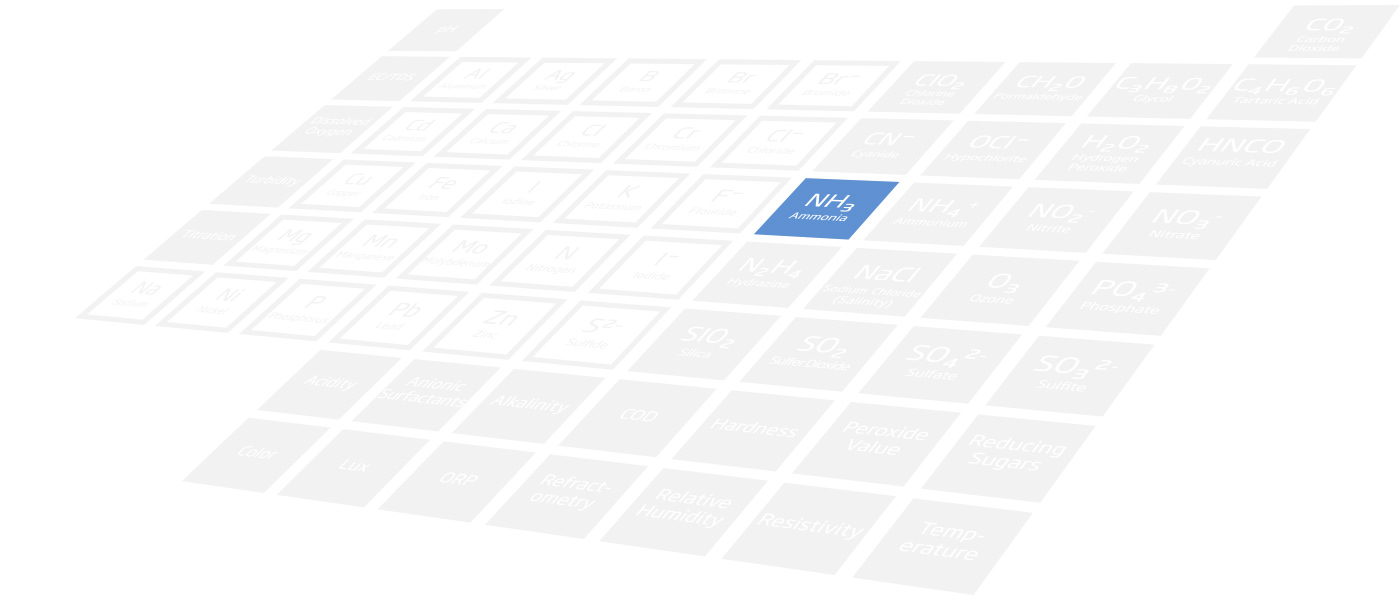
Present naturally in surface and wastewaters, ammonia mainly results from the deamination of organic nitrogen containing compounds and hydrolysis of urea. Ammonia may also be present from water treatment processes that utilize chloramines for disinfection, where ammonia is added to the water to react with chlorine. Ammonia is less likely to appear in groundwater due to adsorption by soil particles.
Ammonia can be measured in two ways, using either the Nessler colorimetric method or an ammonia Ion-Selective Electrode (ISE). In the Nessler method, Nessler reagent (K2HgI4) is added to a sample under strong alkali conditions. The ammonia in the sample reacts with the Nessler reagent producing a yellow color, which is proportional to the concentration of ammonia. Portable and benchtop photometers allow the results to be displayed as ammonia, ammonia-nitrogen or ammonium, each being a mathematical transformation based on the respective formula weight.
The ammonia ISE is an alternative measuring method. The ammonia-selective electrode uses a hydrophobic gas-permeable membrane to separate the sample solution from an internal solution of ammonium chloride. Dissolved ammonia NH3 and NH4+ are converted to NH3 (gas) by raising pH to above 11 with a strong base. NH3 (gas) diffuses through the membrane and changes the internal solution pH that is then sensed by the internal pH electrode. Potentiometric measurements are made with a pH meter having an expanded millivolt scale or with a specific ion meter. Hanna portable and benchtop ISE meters have the ion charge and formula weight pre-programmed into the meter allowing measurements in a variety of concentration units including moles/liter, mg/l and ppm.
It is important to note that the pH of the sample is needed to understand the concentration of ammonia versus ammonium by using the Henderson-Hasselbach equation. Knowing the pH of the sample and ammonia concentration make it possible to determine the proportion that is ammonium. The pKa of ammonia is 9.25.
Portable Meters
A Portable pH/ISE allow the flexibility to perform an ISE measurement with a portable. It is a laboratory measurement that requires the addition of the ISA to fix the ion activity in the sample and the use of a magnetic stirrer to keep the sample homogenous. The portable pH/ISE meter has the ion charge and formula weight pre-programmed for concentration measurements.
Benchtops
Benchtop pH/ISE meters include two-channel option in which a pH probe can be connected to one channel and the ammonia ISE to the other. The benchtop meters have the ion charge and formula weight pre-programmed for use with the ammonia ISE. The benchtop meters also have incremental methods pre-programmed, including the known addition, known subtraction, analyte addition, and analyte subtraction methods.
Electrodes & Probes
The ammonia ISE is a gas-sensing electrode. An alkaline ISA must be used to raise the pH of the sample in order to change any ammonium present into ammonia gas. The ISE is a convenient way to measure ammonia.
Solutions
Solutions for ammonia measurement include ISE standards and ISA for calibration and measurement. Other solutions include the CAL Check standards for verifying and, if needed, the calibration of our portable photometers. Each CAL Check standard is supplied with a Certificate of Analysis stating the accuracy and traceability of the standard.
Accessories
Accessories include spare cuvettes and caps for photometers, magnetic stirrers to ensure adequate mixing when using an ISE, and the spare parts for the ammonia ISE.
Chemical Test Kits
A variety of chemical test kits are available for measuring ammonia, from single parameter test kits to multi-parameter test kits for water quality.
Checker HC
Checker HC, like the chemical test kits, have a reagent-based design in which there is a color change based on concentration. The handheld colorimeters, like portable and benchtop instrumentation, use the Beer-Lambert principle to determine the color change. The color change is measured by a photoelectric cell which is more accurate than subjective visual interpretation.
Portable Photometers
Single parameter portable photometers are available in two ranges and can display results in multiple chemical forms. The portable photometers have a CAL Check feature that allows for performance verification and if needed, recalibration using the CAL Check standards. The portable meters are available as a meter-only option or as a kit. The kit version include a rugged carrying case and CAL Check standards.
Benchtop Photometers
Benchtop photometers include multi-parameter versions for water treatment, wastewater treatment, aquaculture, and nutrient analysis. Each photometer is customized to have the parameters used by a specific industry. All benchtop meters have a digital pH electrode input allowing it to be used as a traditional pH meter. All benchtop photometers can display results in multiple chemical forms.
Spectrophotometers
Spectrophotometers are available with the ammonia method is pre-programmed into the meter for several of the most common ranges. The spectrophotometer offers the highest precision due to the quality of the optical system that has a wavelength accuracy of +/- 1.5 nm. The spectrophotometer allows for custom methods and can display ammonia results in a variety of chemical forms and units of measure.
Reagents
Reagents include the reagents used with chemical test kits and photometers.
